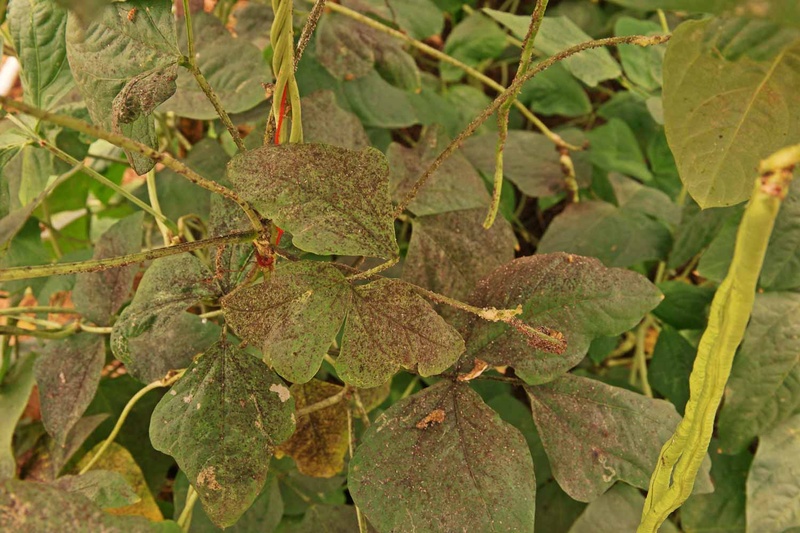
How to Prevent Sooty Mold
Sooty black mold on shrubs and trees indicates the presence of sap-sucking pests such as aphids or scales. These pests excrete honeydew—a substance on which sooty mold grows. Prevent black mold by eradicating sap-sucking pests. There are a variety of natural controls you can implement.
Black mold, also called sooty mold, grows on plants in Florida that are visited by piercing, sucking bugs such as aphids, whiteflies, mealybugs, and scales.
Where Sooty Mold Comes From
These pests inhabit gardens and landscapes throughout Florida and suck the sap from stems and new plant parts.
As the pests move across plants, they secrete a substance called honeydew. Black mold spores, carried by wind or rain, land on the honeydew, put down roots, and quickly overtake the plant. The mold prevents sunlight from getting to the plant and compromises its vigor and health.
While black mold doesn’t kill plants, it’s unsightly and it indicates the presence of pests that can kill plants or damage them.
Dealing with the Source
Florida’s sap-sucking garden pests are prevalent where it is warm—which means in many parts of Florida, they are a year-round nuisance. Some reproduce asexually and give birth to live young, and their populations grow rapidly.
Getting rid of these pests will prevent the occurrence of sooty black mold on plants and shrubs.
Pest Controls
Many gardeners’ go-to pest controls are pesticides or insecticides. While these can be effective, insects sometimes develop a resistance to them. If this happens in your landscape, or if you prefer natural controls, consider these alternative suggestions for ridding your landscape of aphids, whiteflies, mealybugs, and scales.
Natural Pest Controls
- If you find pests on only one or two stalks or branches, physically pinch or brush them off the plant (wear gloves). Check for pests on all parts of the plant, including stems and the undersides of leaves.
- Consider pruning off the branches that have infestations. Kill the bugs by soaking the pruned-off parts in soapy water. You can also use a garden hose and spray the bugs off the plant.
- If the plant has a moderate infestation, spray it with a soap or Neem oil solution. Put dish soap or Neem oil in a bucket of water, mix it well, and use an agricultural sprayer to liberally coat the leaves and stems of the plant. A spray bottle can also work if you don’t have an agricultural sprayer. The soap solution dissolves the waxy coating on pest bodies and dehydrates them. The Neem oil solution hinders pests’ ability to feed and acts as a repellent.
- Beneficial insects such as ladybugs and lacewings provide a natural control of sap-sucking pests (i.e. they eat them). Consider growing plants such as clover, mint or dill to attract beneficial insects to your landscape.
- Grow garlic or onions around your landscape to repel sap-suckers such as aphids. Or draw pests away from your plantings by attracting them to plants they like–in far-away corners. You can plant flowers such as zinnias, dahlias, cosmos, and asters to attract pests.
If you live in a community serviced by a professional Florida landscape company such as Floralawn, you don’t have to worry about sap-sucking pests or the occurrence of sooty mold. If you care for your landscape yourself, be on the watch for both, and implement the above solutions.
#floralawn #lakelandfl #landscape #aphids #naturalpestcontrol #ladybug